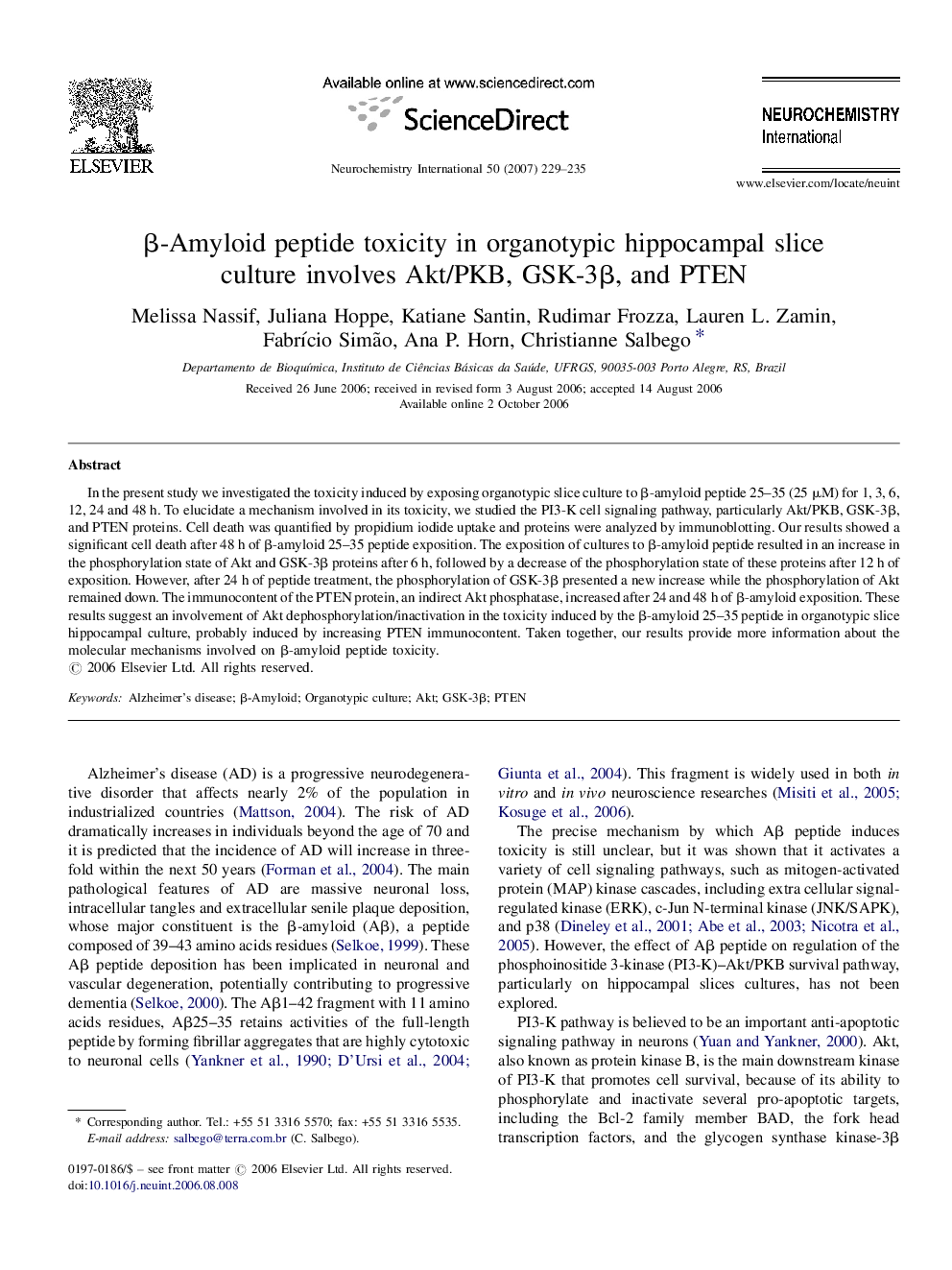| Article ID | Journal | Published Year | Pages | File Type |
|---|---|---|---|---|
| 2202251 | Neurochemistry International | 2007 | 7 Pages |
In the present study we investigated the toxicity induced by exposing organotypic slice culture to β-amyloid peptide 25–35 (25 μM) for 1, 3, 6, 12, 24 and 48 h. To elucidate a mechanism involved in its toxicity, we studied the PI3-K cell signaling pathway, particularly Akt/PKB, GSK-3β, and PTEN proteins. Cell death was quantified by propidium iodide uptake and proteins were analyzed by immunoblotting. Our results showed a significant cell death after 48 h of β-amyloid 25–35 peptide exposition. The exposition of cultures to β-amyloid peptide resulted in an increase in the phosphorylation state of Akt and GSK-3β proteins after 6 h, followed by a decrease of the phosphorylation state of these proteins after 12 h of exposition. However, after 24 h of peptide treatment, the phosphorylation of GSK-3β presented a new increase while the phosphorylation of Akt remained down. The immunocontent of the PTEN protein, an indirect Akt phosphatase, increased after 24 and 48 h of β-amyloid exposition. These results suggest an involvement of Akt dephosphorylation/inactivation in the toxicity induced by the β-amyloid 25–35 peptide in organotypic slice hippocampal culture, probably induced by increasing PTEN immunocontent. Taken together, our results provide more information about the molecular mechanisms involved on β-amyloid peptide toxicity.
